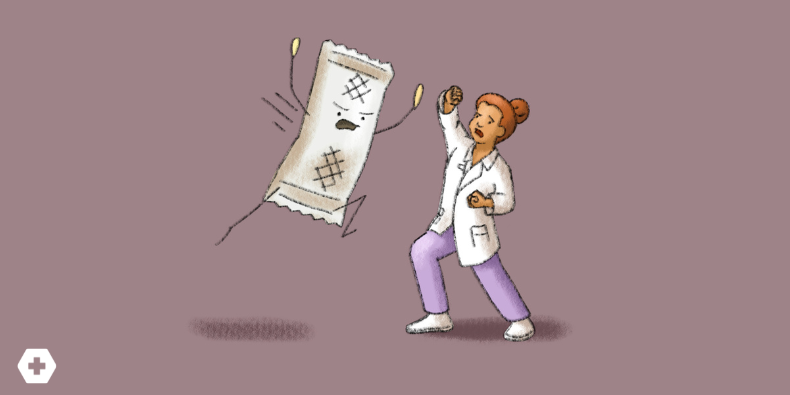
What Are Nicotine Pouches? The Dangerous Trend Hooking Teens

There’s always a new trick up Big Tobacco’s sleeve. First it was flavored cigarettes, then e-cigs that looked like USB drives. Now? It’s minty little pouches that slide quietly between lip and gum—no smoke, no spit, no smell, no shame. Just a smooth jolt of nicotine.
Welcome to the world of oral nicotine pouches (think ZYN, On!, Velo, Rogue, Lucy). And yes, they’re showing up in schools, locker rooms, and sidelines everywhere.
From the Classroom to the Sidelines: What Are Nicotine Pouches?
Nicotine pouches are smoke-free, spit-free packets of nicotine powder mixed with sweet flavorings. They are designed to sit quietly between the lip and gum, releasing nicotine slowly over 30 to 60 minutes. Some are made from tobacco-derived nicotine, others rely on synthetic versions. Most include stabilizers, pH balancers, and just enough sugar to taste like chewing gum.
Unlike traditional smokeless tobacco, there’s no tobacco leaf inside—just a concentrated buzz meant to mimic the effect of smoking or vaping, minus the visible cloud. Their discreet design makes them easy for teens to use during class or sports practice without drawing attention.
Pouch strength varies widely—from 1 mg to as high as 130 mg in imported “super pouches.” That matters because even low doses of nicotine can be dangerous in children. Just 0.2 mg/kg is enough to cause symptoms. For a toddler, even one or two high-dose pouches could be toxic. Ingestion has already led to pediatric poisonings, with symptoms including vomiting, elevated heart rate, dizziness, headache, and confusion.
From “Safe Alternative” to Gateway Drug?
The marketing push for these pouches is disturbingly familiar. Glossy ads, TikTok influencers, and promises of focus, mood boosts, weight control, and athletic edge. All wrapped up in flavors like mango, bubblegum, and ice cream. Sound familiar? It’s the same playbook used to sell vaping a decade ago—and we know how that ended: EVALI, skyrocketing teen addiction, and a generation hooked on nicotine.
Today, over 500,000 adolescents are estimated to use nicotine pouches (this is DOUBLE the 2021 numbers). Use is most common in teen boys, rural areas, and among youth who already smoke or vape. Even more troublingly, recent surveys suggest that nicotine pouch use is climbing while e-cigarette use has plateaued.
Unfortunately tobacco-free does not mean risk-free.
What Nicotine Does to the Developing Brain and Body
While nicotine itself isn’t classified as carcinogenic, pouches often contain harmful additives such as formaldehyde, nickel, chromium, and ammonia. Nicotine isn’t simply addictive, it rewires the teen brain. It hijacks dopamine pathways and reinforces reward-seeking behaviors. It may sharpen focus temporarily, but over time it actually impairs attention and memory. Withdrawal hits hard with irritability, restlessness, low mood, and poor concentration.
When it comes to the body, nicotine:
-
-
-
-
Raises heart rate and blood pressure
-
-
-
Induces insulin resistance and lowers HDL
-
Suppresses appetite and may promote disordered eating
-
Causes other common side effects including dry mouth, nausea, throat irritation, dizziness and gingival blistering
-
Could Pouches Help Kids Quit Vaping?
Interestingly, a 2025 Pediatrics study found that among teen vapers, those who started using nicotine pouches were less likely to still be vaping six months later. While that may sound promising, let’s not celebrate just yet. Nicotine pouches may not be a “step-down” product. They may be the first step on the road toward lifelong nicotine use—just like flavored vapes were.
Where Do Health Organizations Stand?
The FDA allows pouches to be sold legally in the U.S., but they are not approved for smoking cessation. They are labeled “safer” than cigarettes only because they contain fewer harmful chemicals, not because they are safe.
The American Academy of Pediatrics is clear: nicotine pouches are a threat. They are calling for stronger education and intervention to protect youth from the health risks, addiction, and the well-documented dangers of nicotine on the adolescent brain.
Bottom Line: Nicotine Pouches are A Problem
These pouches are perfectly engineered to appeal to youth—tasty, discreet, and easy to hide. But make no mistake: they are addictive, potentially harmful, and in the case of small children, even toxic. And they’re marketed with all the subtlety of the candy aisle, preying on curiosity and impulse in developing brains.
In the clinic, make nicotine pouch use a part of your routine substance screening—especially when teens say they’ve “quit smoking” or “don’t vape anymore.” These products may be smoke-free, but they’re far from risk-free. As clinicians, we’re in a key position to catch early use, counsel on risks, and help our patients steer clear of the next wave of nicotine addiction.
Want to learn more about Nicotine Pouch Use in Kids? Tune in to our recent Peds Reviews and Perspectives segment, "Nicotine Pouches."
Practice-Changing Education
Experience education that goes beyond theory. Explore Hippo Education’s offerings below.


